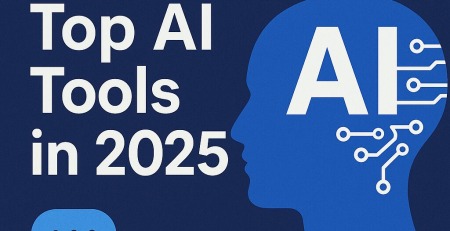As an IT expert, it’s my job to keep up with the latest threats facing businesses today. One of the biggest threats we’re seeing right now is ransomware. Ransomware is a type of malware that encrypts files on a victim’s computer, making them inaccessible until a ransom is paid. It’s a growing problem that can cause significant damage to businesses of all sizes. In this post, I’ll discuss some of the latest threats for ransomware and the best solutions to prevent it.
Threats
One of the latest threats for ransomware is the rise of double extortion attacks. In a double extortion attack, cybercriminals not only encrypt a victim’s files but also steal sensitive data and threaten to release it publicly unless a ransom is paid. This type of attack can be particularly damaging for businesses that store confidential information.
Another threat is the use of social engineering tactics to trick users into downloading ransomware. Cybercriminals may use phishing emails, fake websites, or other methods to trick users into downloading malware, including ransomware.
Solutions
Fortunately, there are several solutions that businesses can use to prevent ransomware attacks.
- Employee Training: Employee training is one of the best ways to prevent ransomware attacks. By educating employees on how to identify and avoid phishing emails, fake websites, and other social engineering tactics, you can reduce the risk of a ransomware attack.
- Endpoint Protection: Endpoint protection solutions, such as antivirus software, can help detect and block ransomware before it can cause damage. Advanced endpoint protection solutions use machine learning and behavioral analysis to detect ransomware and other types of malware.
- Data Backup: Regularly backing up your data is essential to protecting your business from ransomware. In the event of a ransomware attack, you can simply restore your files from a backup rather than paying the ransom.
- Network Segmentation: Network segmentation is the practice of dividing a network into smaller segments, which can help contain the spread of ransomware if an attack occurs.
- Patch Management: Keeping your software and operating systems up-to-date is critical to preventing ransomware attacks. Cybercriminals often exploit vulnerabilities in outdated software to spread ransomware.
Conclusion
Ransomware attacks are becoming more sophisticated, and businesses need to take steps to protect themselves. By implementing the solutions discussed in this post, such as employee training, endpoint protection, data backup, network segmentation, and patch management, you can significantly reduce the risk of a ransomware attack. As an IT expert, I highly recommend that businesses take a proactive approach to cybersecurity to protect themselves from ransomware and other types of malware.
As an IT expert, it’s my responsibility to stay up-to-date with the latest threats and trends in the cybersecurity landscape. One of the biggest threats facing businesses today is ransomware. Ransomware is a type of malware that encrypts a victim’s files, making them inaccessible until a ransom is paid. In this blog post, I’ll discuss the latest threats for ransomware, recent examples of ransomware attacks, and the best solutions to prevent them.
Threats
Ransomware attacks have become more sophisticated in recent years. Some of the latest threats include:
- Double Extortion: In a double extortion attack, cybercriminals not only encrypt a victim’s files but also steal sensitive data and threaten to release it publicly unless a ransom is paid. This type of attack can be particularly damaging for businesses that store confidential information.
- Fileless Ransomware: Fileless ransomware attacks do not involve the installation of malware on the victim’s computer. Instead, the attack is carried out using legitimate tools and processes already present on the victim’s computer. This type of attack can be difficult to detect and prevent.
- Ransomware-as-a-Service: Ransomware-as-a-Service (RaaS) is a subscription-based model in which cybercriminals can rent ransomware from other hackers. This model makes it easier for inexperienced cybercriminals to carry out ransomware attacks.
Recent Examples
Some recent examples of ransomware attacks include:
- Colonial Pipeline: In May 2021, the Colonial Pipeline, which supplies fuel to much of the southeastern United States, was hit by a ransomware attack. The attack caused significant disruption to fuel supplies and resulted in the company paying a ransom of $4.4 million.
- JBS: In June 2021, JBS, the world’s largest meat supplier, was hit by a ransomware attack. The attack caused several of the company’s plants to shut down, disrupting meat supplies in several countries. The company paid a ransom of $11 million.
- Kaseya: In July 2021, Kaseya, a software company that provides IT services to other businesses, was hit by a ransomware attack. The attack affected several of Kaseya’s customers, who were unable to access their data. The attackers demanded a ransom of $70 million.
Solutions
There are several solutions that businesses can implement to prevent ransomware attacks. Some of the best solutions include:
- Employee Training: One of the most effective ways to prevent ransomware attacks is to provide employee training. Employees should be trained to identify and avoid phishing emails, fake websites, and other social engineering tactics used by cybercriminals.
- Endpoint Protection: Endpoint protection solutions, such as antivirus software, can help detect and block ransomware before it can cause damage. Advanced endpoint protection solutions use machine learning and behavioral analysis to detect ransomware and other types of malware.
- Data Backup: Regularly backing up your data is essential to protecting your business from ransomware. In the event of a ransomware attack, you can simply restore your files from a backup rather than paying the ransom.
- Network Segmentation: Network segmentation is the practice of dividing a network into smaller segments, which can help contain the spread of ransomware if an attack occurs.
- Patch Management: Keeping your software and operating systems up-to-date is critical to preventing ransomware attacks. Cybercriminals often exploit vulnerabilities in outdated software to spread ransomware.
Conclusion
Ransomware attacks have become more common and sophisticated in recent years, and businesses must take steps to protect themselves. Implementing solutions such as employee training, endpoint protection, data backup, network segmentation, and patch management can significantly reduce the risk of a ransomware attack













Leave a Reply